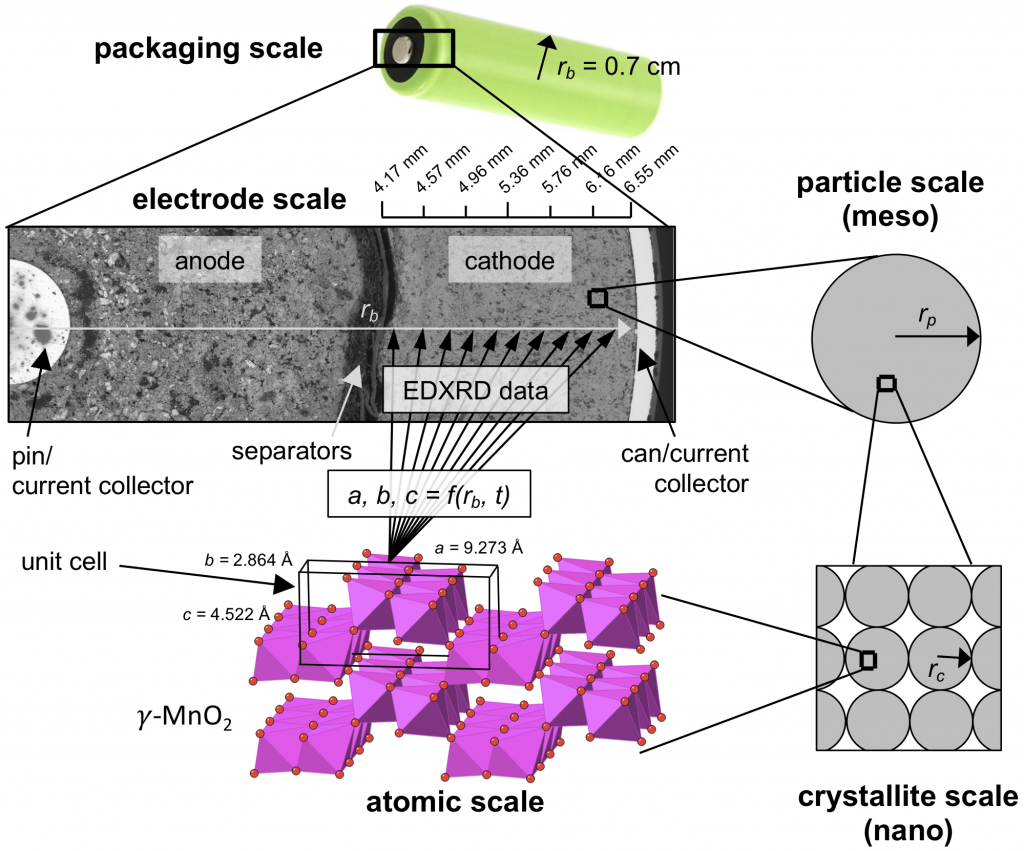Motto: You can edit a shitty draft, but can't edit an empty page.
— Emily M. Farris (@emayfarris) March 4, 2021
Author Archives: joshuagallaway
How much PPE do you wear to check batteries?
Link
One of the photographers who walks around Northeastern with a camera knocked on the door while I was doing stuff.
Bi Enables the Formation of Disordered Birnessite in Rechargeable Alkaline Batteries
We have a new paper out in the Journal of the Electrochemical Society, written by Andrea Bruck. It continues our work on full 617 mAh/g rechargeability of MnO2 in alkaline batteries. Getting that full capacity reversibly enables a design pathway to get very inexpensive ($50/kWh) and high energy density (200 Wh/L) aqueous electrolyte rechargeable Zn-MnO2 batteries for the power grid. Aqueous electrolytes are desirable as an alternative to Li-ion batteries, which have flammable electrolytes, and become more of a safety risk at large scales.
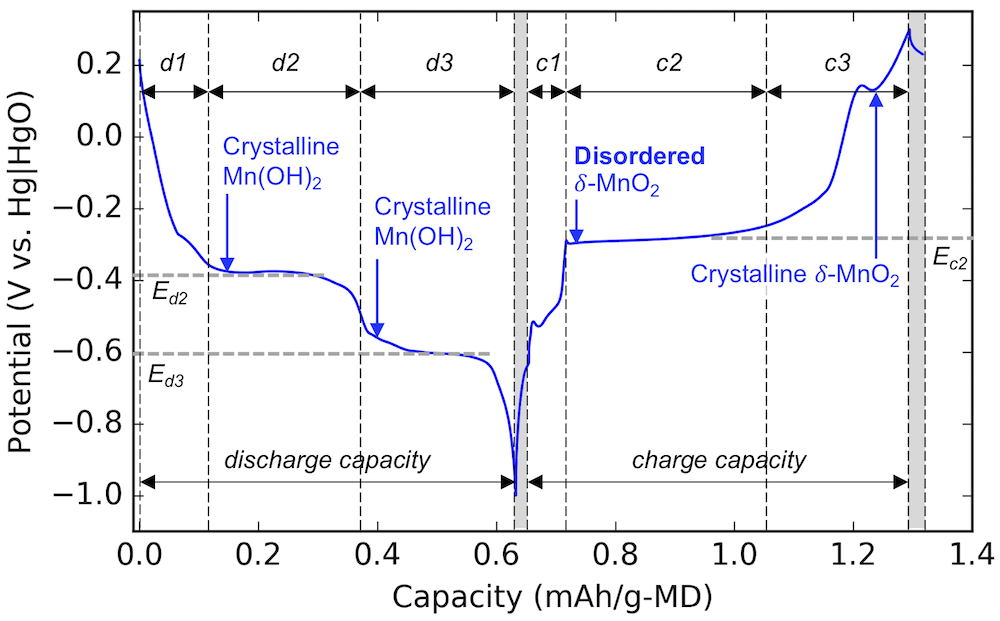
Our main finding is the identification of an amorphous or “disordered” intermediate species during cycling. The figure above shows the voltage profile of the MnO2 cathode during cycling, and each section is labeled with the major material compound that is formed during that stage. (The discharge stages are labeled d1, d2, and d3. Likewise the charging stages are c1, c2, and c3.) We mix the MnO2 with bismuth oxide or Bi2O3, which is what makes it rechargeable. And during step c2, we have demonstrated a disordered compound we had never seen before. The reason we had never seen it is because all the other compounds are crystalline, and crystalline things are very easy to see. Disordered (or non-crystalline) things are often more challenging to put your finger on.
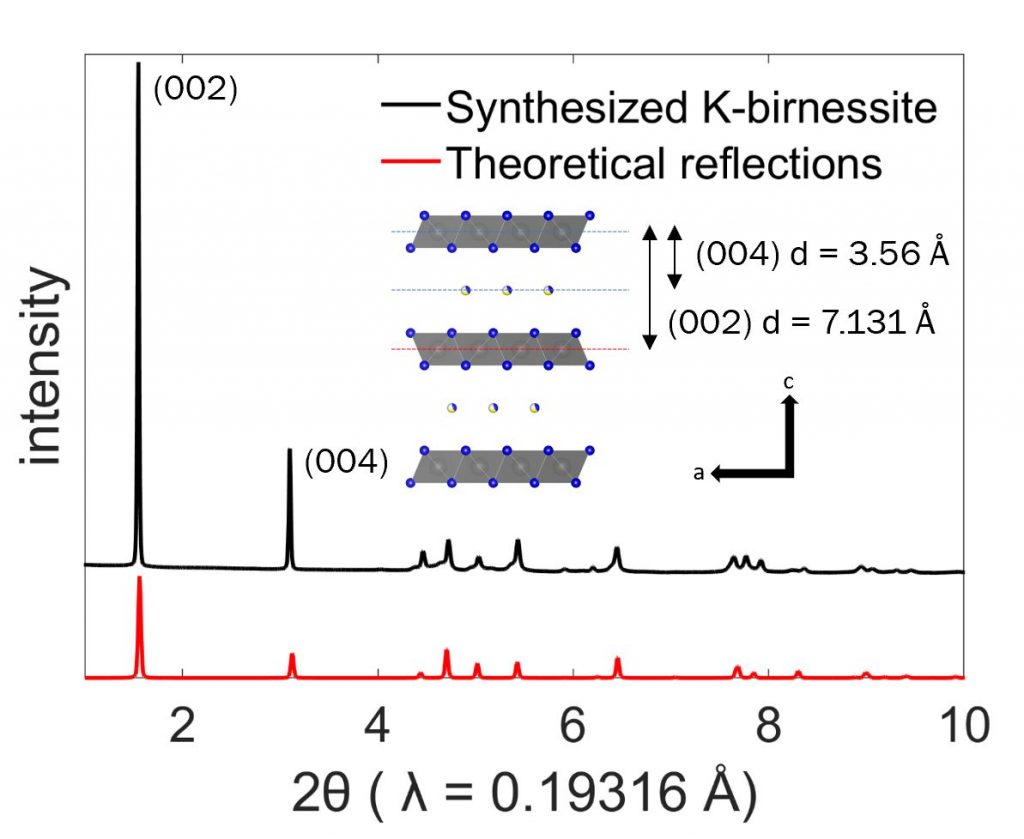
The figure above shows the structure of the layered birnessite or ẟ-MnO2, which consists of [MnO6] slabs separated by an interlayer. This data is from X-ray diffraction (XRD), which uses long-range crystallinity to produce a material fingerprint. This fingerprint is in the form of peaks or reflections, and the plot has the experimental data (black) compared to a theoretical calculation (red). We used a method called Rietveld refinement to match these and get the coordinates for all of the atoms in the material. (For example, we can tell the birnessite is hexagonal and the slab-to-slab distance is 7.131 Å)
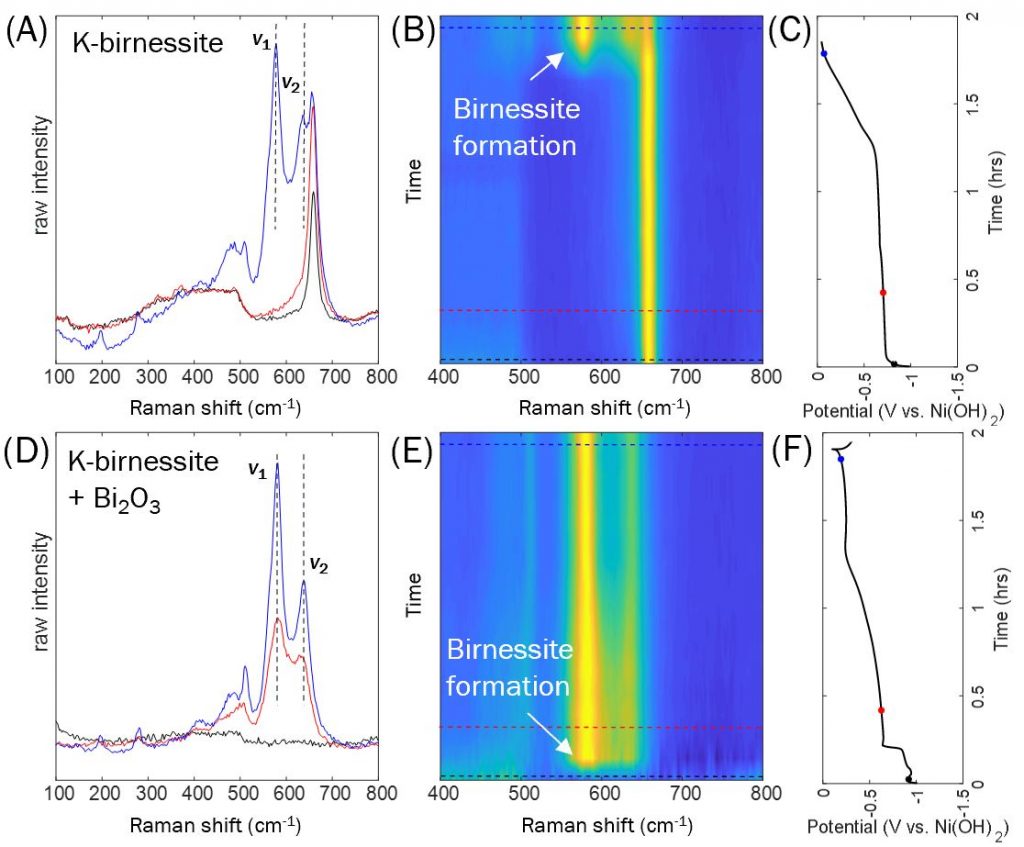
However, you can’t observe a material by XRD if it doesn’t have good crystallinity, a.k.a. the “long-range order” to diffract X-rays. Instead we used operando Raman spectroscopy, which fingerprints materials using their response to a laser. Birnessite materials result in a series of Raman vibrational bands, the largest of which are ν1 and ν2. The figure above shows the Raman spectrum during the charge step both without Bi (top) and with Bi (bottom). In the top plots, the ν1 and ν2 bands didn’t appear until the blue dot, which is the c3 stage. However, with Bi, they appeared very early, even before the red dot, which is in the c2 stage. We know this is a disordered birnessite because it was not visible to XRD, but showed up clearly with Raman spectroscopy.
This is exciting because no one really knows why Bi makes birnessite rechargeable. Since we see it enables this formation of a disordered birnessite, that could be the key.
Image

EDXRD review paper
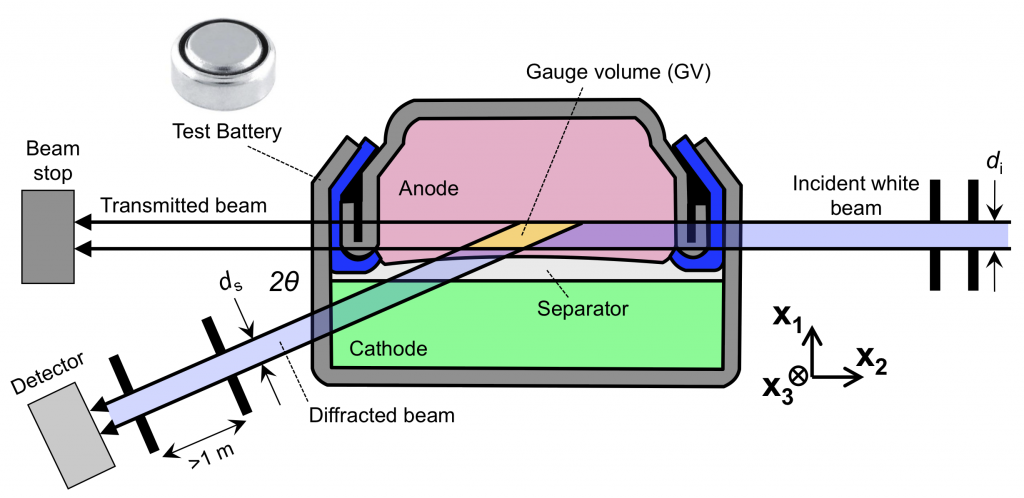
We have a new paper out, which is a review paper on using energy dispersive X-ray diffraction (EDXRD) for battery characterization. EDXRD had previously been used to get crystallography data from inside diamond anvil cells, and also from the bulk interior of engineering materials like turbine blades. Using it to look inside sealed batteries was a good idea. It wasn’t my idea, but I’m one of the battery people they found to try it. I have a passion for current distributions, and EDXRD is a wonderful way to directly observe current distributions.
The paper was written with Amy Marschilok and the Takeuchi group at Stony Brook, and also with Mark Croft at Rutgers. We’re still using EDXRD to watch complex mechanisms inside batteries (without the fear that opening the battery will change anything), but since the review paper spans 2012-2020, it was a good idea to catalog past work in one place. The new HEX beamline under development at NSLS-II will be the premier EDXRD resource sometime soon. The figure below is an attempt to explain what exactly EDXRD gets you (atomic scale information, as a function of the electrode scale) and why it’s important (look how thick that electrode is). If you ever want to talk about EDXRD drop me a line.
